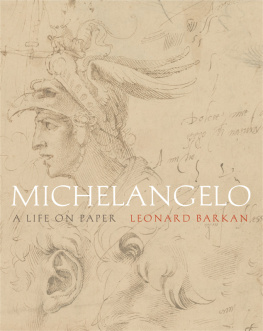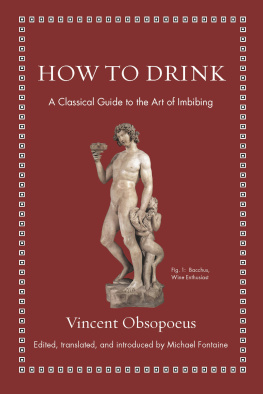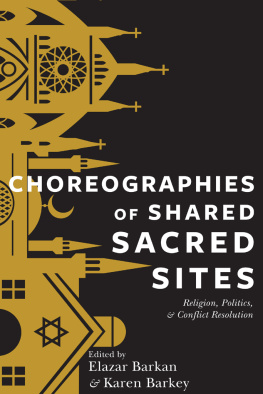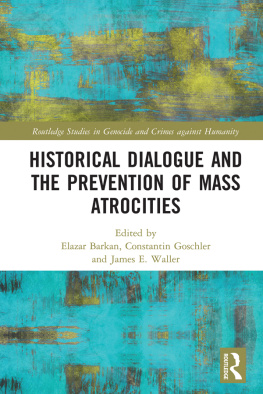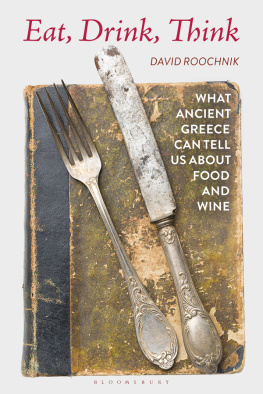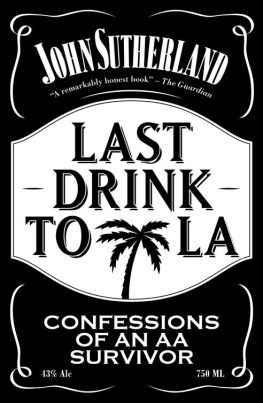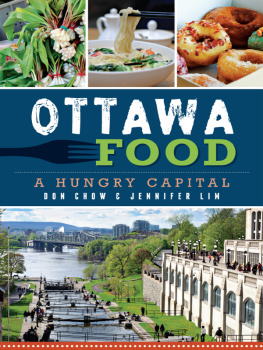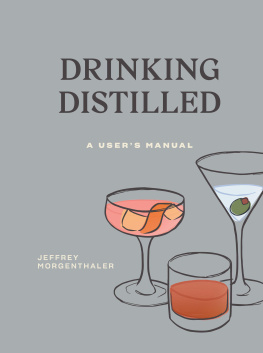Contents
Guide
Page List
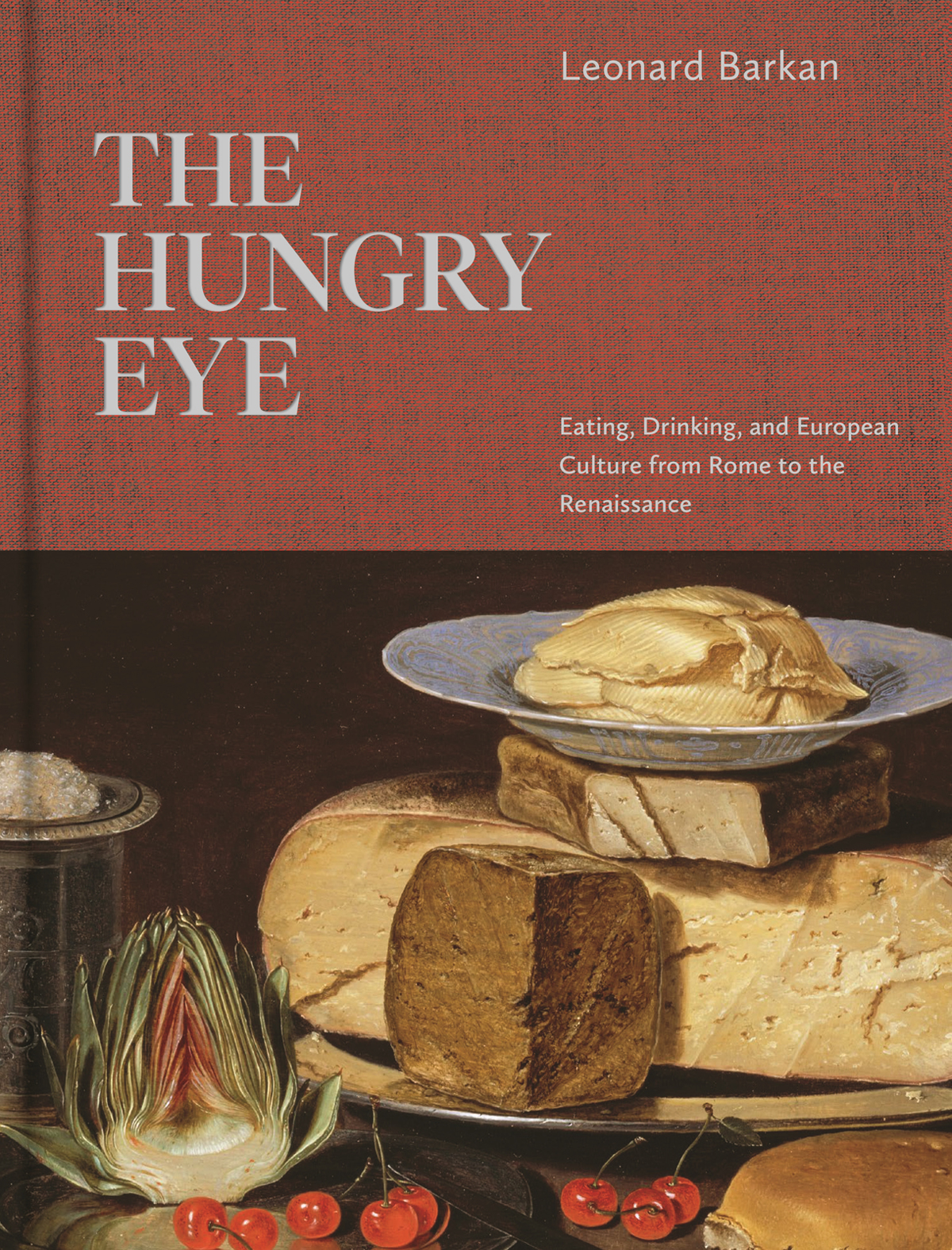
THE
HUNGRY
EYE

THE
HUNGRY
EYE
Eating, Drinking, and European Culture
from Rome to the Renaissance
Leonard Barkan
Princeton University Press
Princeton and Oxford
Dedication
As is indicated by my Acknowledgments, there are countless friends and colleagues surrounding me in my academic life, and it would be a pleasure, as it has been previously, to dedicate this volume to one or more of them. I have chosen to move in a different direction, however, one that seems especially appropriate for this book. The final stages of manuscript work on The Hungry Eye coincided with some of the deepest lockdown phases of the Covid-19 pandemic, and as I write this, the crisis is by no means over. My beloved spouse, Nick Barberio, and I made the decision to be particularly rigorous in our personal quarantine, scarcely exiting from our Princeton house for many months. We would never have been able to take this step were it not for the fact that many sources of food and drink, along with other domestic needs, were uninterruptedly active, discharging their production and transport efforts with efficiency and safety. We areis it any surprise?a pair of demanding customers when it comes to all the materials of dining, whether its fresh eggs from New Jersey or olive oil from Umbria. To know, at our end, that such a market basket was available and, at the suppliers end, that there was employment for such a wide population of butchers and greengrocers, farmers and livestock keepers, pickers and packers, shippers and deliverers: this represented sustenance in a dark time.
I dedicate this book to all those heroes who have been nourishing our bodies and souls for these lonely months.
L.B.
Princeton, October 2020
Week 30 of lockdown
Copyright 2021 by Princeton University Press
Princeton University Press is committed to the protection of copyright and the intellectual property our authors entrust to us. Copyright promotes the progress and integrity of knowledge. Thank you for supporting free speech and the global exchange of ideas by purchasing an authorized edition of this book. If you wish to reproduce or distribute any part of it in any form, please obtain permission.
Requests for permission to reproduce material from this work should be sent to Published by Princeton University Press, 41 William Street, Princeton, New Jersey 08540 In the United Kingdom: Princeton University Press, 6 Oxford Street, Woodstock, Oxfordshire OX20 1TR
press.princeton.edu
Cover illustrations: (front) Clara Peeters, Still Life with Cheeses, Artichoke, and Cherries, c. 1625. Los Angeles County Museum of Art, California. 2021 Museum Associates / LACMA / Art Resource, New York; and (back) xenia with fruit bowl, 1st century CE, from the House of Julia Felix, Pompeii. Museo Archeologico Nazionale, Naples. Scala / Art Resource, New York
Illustrations in front matter:
All Rights Reserved
Library of Congress Cataloging-in-Publication Data Names: Barkan, Leonard, author.
Title: The hungry eye : eating, drinking, and European culture from Rome to the Renaissance / Leonard Barkan.
Description: Princeton : Princeton Univeristy Press, [2021] | Includes bibliographical references and index.
Identifiers: LCCN 2020044598 (print) | LCCN 2020044599 (ebook) | ISBN 9780691211466 (hardback) | ISBN 9780691222387 (ebook)
Version 1.0
Subjects: LCSH: Aesthetics, European. | Dinners and diningEuropeHistory. | Arts, EuropeanThemes, motives. Classification: LCC BH221.E853 B37 2021 (print) | LCC BH221.E853 (ebook) | DDC 364.1/20940902dc23 LC record available at https://lccn.loc.gov/2020044598 LC ebook record available at https://lccn.loc.gov/2020044599 British Library Cataloging-in-Publication Data is available
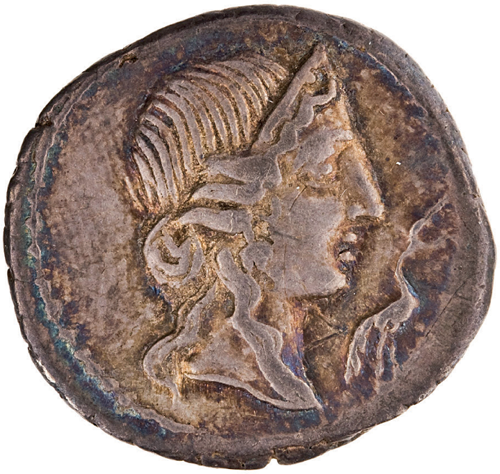
This publication is made possible in part from the Barr Ferree Foundation Fund for Publications, Department of Art and Archaeology, Princeton University.
Designed by Jeff Wincapaw
This book has been composed in Adobe Caslon Pro
Contents
ix
1
7
37
91
141
205
285
307
315
Acknowledgments
I started as a scholar of the Renaissance and antiquity who loved to cook, to eat, and to taste wine; then, by various happy accidents, I began to receive requests that I actually write about cooking, eating, and tasting wine. After a couple of decades during which I kept scholarly and gastronomic undertakings sealed off from each other, it began to seem inevitable that I would hook them up, attempting somehow to maintain the rigor of a cultural historian with the attentiveness to pleasure of the gastronome. Whether I have succeeded, others can decide. That I have been permitted to try is courtesy of a great many wise, affectionate, and pleasure-loving friends.
When I think about beginnings for these efforts, two colleagues of Olympian stature immediately come to mind. Near the beginning of my time at New York University, when I scarcely knew anyone outside my own departments, Marion Nestle, the great scholar-activist in the fields of nutrition and public health, somehow caught wind of the fact that I was a foodie, and sight unseen she invited me to give a brief talk in a panel about food and culture. I didnt really know what was expected at such a forum, so I jotted down a few notes toward what I called a culinary autobiography. Marion sat in the front row sporting her inimitable smile and at the end, essentially, welcomed me to the world of food studies. Fifteen years later, the miraculous Shirley Tilghman, then president of Princeton University, invited me to give one of her Presidents Lectures. I wanted to do something worthy of her (no easy task!). My talk, entitled Did Eating Have a Renaissance? fell well short of that worthiness; nevertheless it was, and remains, the basis of this book. Thank you, Marion; thank you, Shirley.
The fact that I could be a writer about food and wine at all is owing to the generosity of some very remarkable people over many years. Even though I wrote a book about it, I still dont know how I was lucky enough to land in Rome at just the moment when a ragtag group of intellectuals, politicos, and gourmands was creating the vast enterprise of gastronomic journalism known as Gambero Rosso, nor am I certain how it is that they let me hang out with them. Since those days they have dispersed into many different enterprises, but they still constitute my pantheon of good company: Daniele Cernilli, Linda Davidson, Paolo Zaccaria, Marina Thompson, Sergio Ceccarelli, Sandro Sangiorgi, the late Stefano Bonilli. I raise many glasses to you all.
Over the years, from the inception of this project to the present and beyond (I hope), I have been privileged to be welcomed in two extraordinary academic and cultural institutions: the American Academy in Rome and the American Academy in Berlin. No coincidence that in both cases these are sites where much of the intellectual life is conducted with the kind of sociability that good food and good wine inspire, for which I salute the respective geniuses of cuisine during my time at those academies: Mona Talbott in Rome, Reinold Kegel in Berlin. We werent


